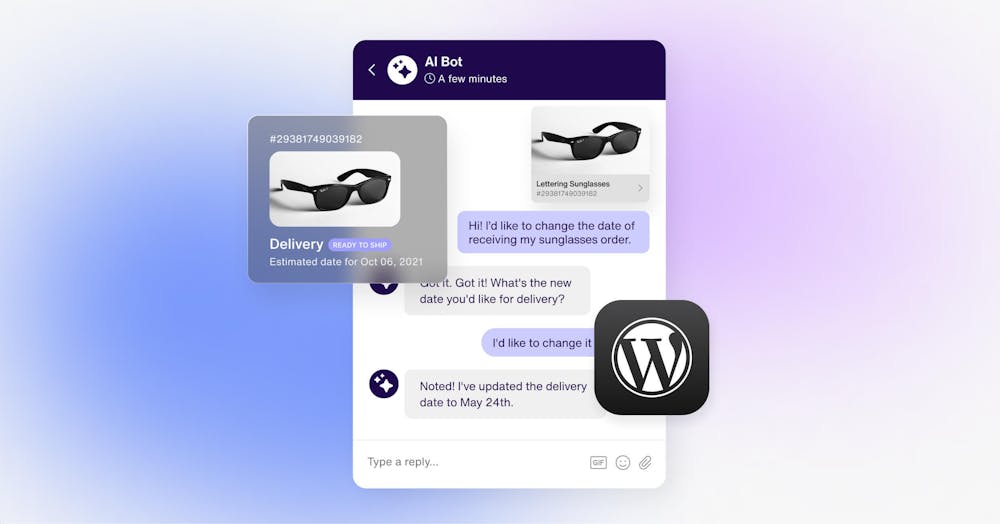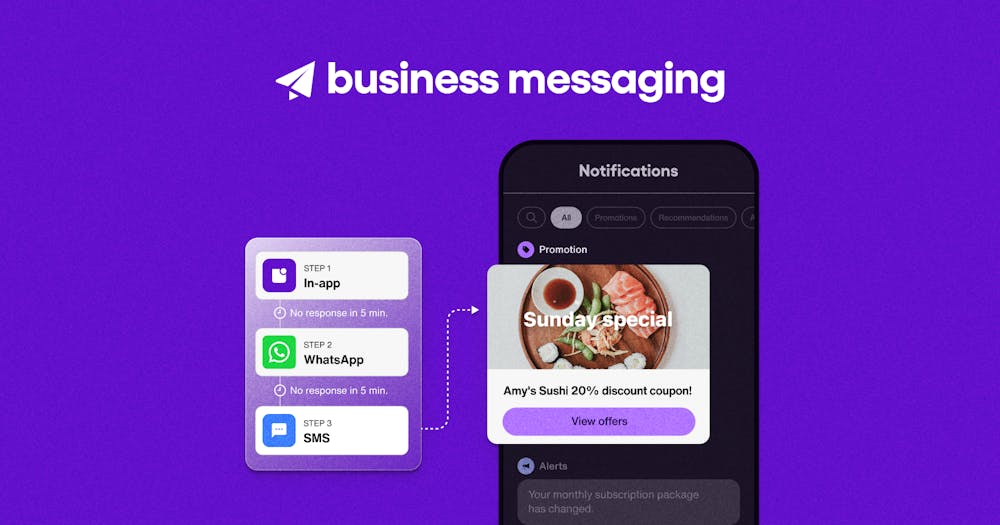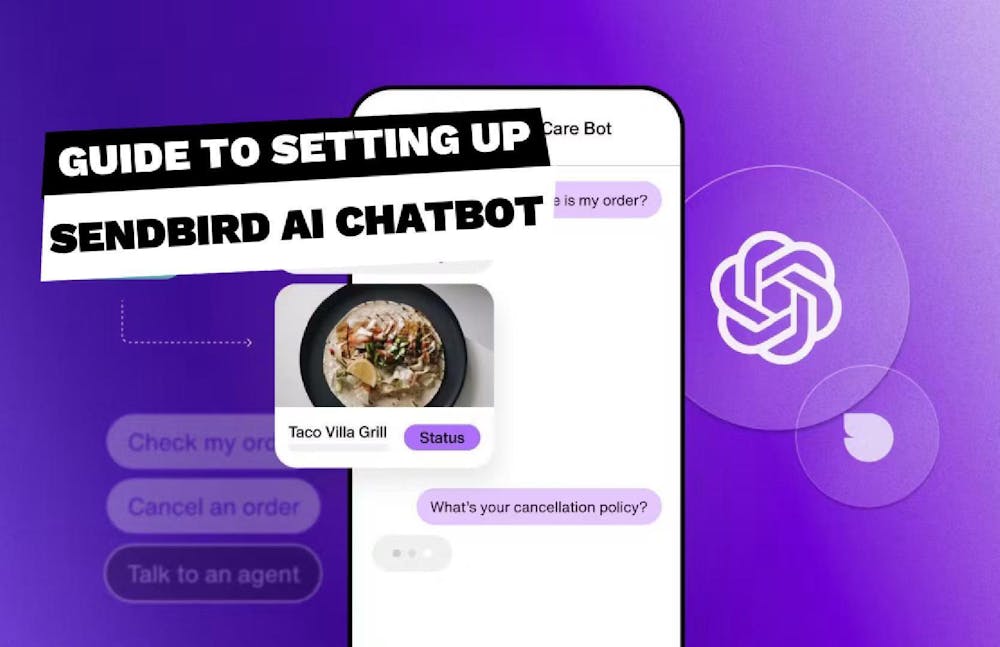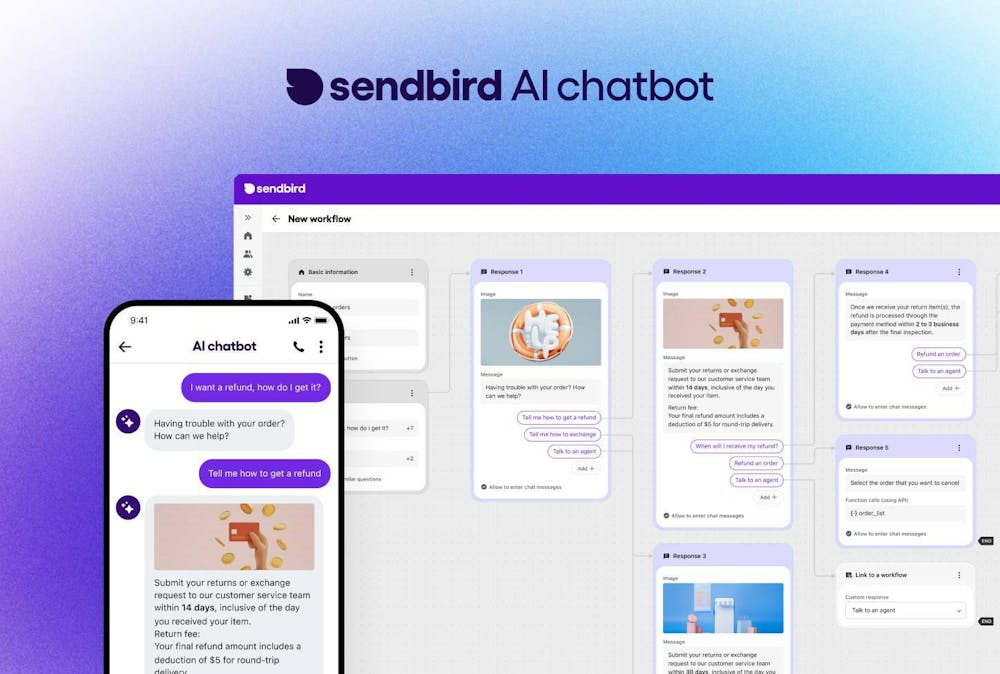Introducing a new voice and video group calling API to boost customer and social engagement in web and mobile apps
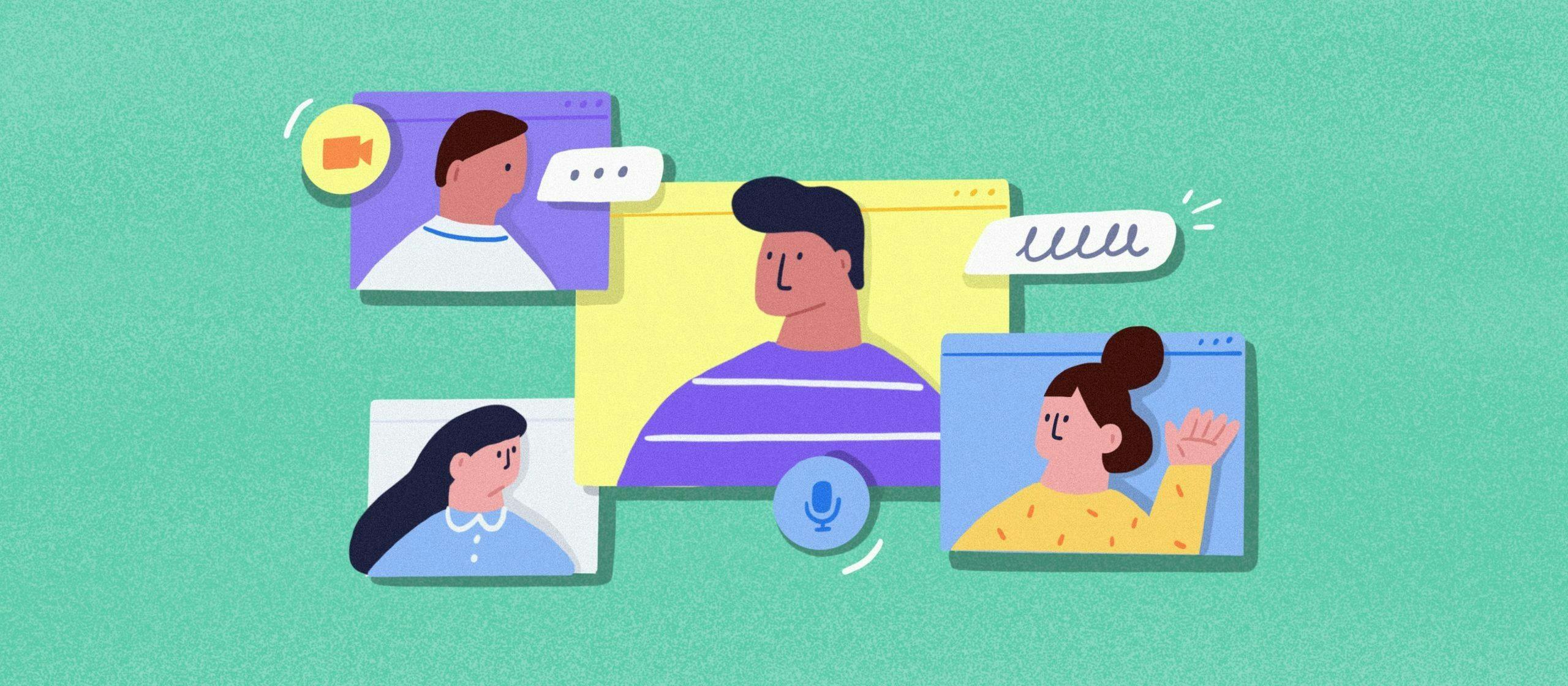
As businesses harness the power of real-time social interactions and chat services for their apps, group engagement is an essential component of their growth strategies. Sendbird already facilitates chat conversations of up to 1M users in open channels and private Supergroups.
Today, Sendbird is very excited to announce the launch of a new group calling API for high-quality voice and video groups. Group calls add another layer of social interaction in addition to the chat and direct calls APIs. With group calls, developers can create a space through their apps for remote users to meet conceptually as they would in real life. At this time, Sendbird Calls supports up to 1000 participants in audio calls and up to six participants in video calls. As the API evolves, larger meeting rooms will be enabled in subsequent releases.
How to add voice and video group calls to your mobile app
Getting started with group calls is easy, especially if you’ve already used direct calls and have a Sendbird account. If not, sign up! It’s free and you’ll receive 20 credits upfront to place your first calls.
To quickly evaluate the Sendbird group call experience, try out our web-hosted JavaScript sample app:
- You’ll need your app ID available in the dashboard
- Your user ID
Once signed in, you can create a room and invite participants by sharing a link.
To build your own app, simply:
- Download our sample apps on GitHub for JavaScript, iOS, or Android
- Go to the Sendbird developer portal and check out the JavaScript step-by-step video tutorial by our product expert KC Kern
- And visit Sendbird docs for video chat code references in iOS, Android, JavaScript, React Native, and Unity
Before you dive into group calls, here’s a quick overview.

In-app live streaming made easy.
A quick tour of the group call API
The basic concepts of group calls include rooms, users, and participants.
- A room is a virtual space where participants can share voice and video media streams.
- A participant is a user who can enter and exit a room.
- A unique user ID may join as multiple participants, for example, on two separate devices.
The local video and audio settings can be configured before entering a room, as shown in this sample UI:

Additional participants, upon entering a room, can interact with the room by:
- Turning ON/OFF audio and video streams
- Selecting cameras
The application can then be attached to user interface listeners, which enable the handling of user-related events such as:
- A new participant enters the room
- The media stream from the new participant begins
Below is an example of the local user interface including:
- The room and participant user IDs
- The remote video streams
- The room participants’ list
- Chat on live
- And the local media and settings controls

Group calls billing, security, and compliance
Group calls’ billing is manageable from the dashboard and is self-service enabled. Similar to direct calls, group calls use credits. Participants consume them when in a room. The respective voice and video server-related rates apply to each participant. P2P connections are not possible in a group call.
Group calls are also secure and HIPAA compliant. For all communications, users are authenticated and media streams encrypted.
Delivering cutting-edge social experiences
In the last few years, “messaging” applications and websites such as WhatsApp, Facebook Messenger, or Telegram have all added voice and video for direct and group calls, raising the standard for in-app communication. Chat service-only applications fail to match the new level of social experiences users have come to expect, running the risk to push users to turn to traditional phone calls or onto more popular messenger apps for video calls.
Besides, voice and video availability are important when a stronger human connection is required. With voice and video calls, participants can pick up on emotional cues like the tone of voice, the sound of a laugh, or a facial expression — things that can’t be communicated via emoji. Gamers connect to other players with voice because sharing a common experience is more fun. Every additional sense involved makes our connection more human and thus deeper, increasing our sense of belonging and our willingness to stick around and partake.
If voice and video are the new text for some users, the ability to offer it in your app is the sign of a modern, high-tech, and connected brand in tune with its time. Innovative dating app Hinge experienced firsthand the desire and excitement of daters to connect with voice and video!
“Within two months, one-third of Hinge’s users had a video chat date.”
Logan Uri, Hinge Labs Uncovers Video Chat Dating Trends
Many applications can use group calls to engage customers and communities, for example:
- Apps like Reddit, Meetup, or Subsplash where people congregate around particular topics
- Gaming apps where users debrief and collaborate
- Apps related to education, talent acquisition, and sales account management where group calls increase trust, comprehension, and communication efficiency
How to build group calls in your app faster
The reason why real-time digital interactions are so valuable for businesses is that they create deeper social bonds. When connecting with rich chat, voice, or video we grow empathy and sympathy. Doctors can relate better to their patients, assuring they are heard and taken seriously. Support agents can affect a frustrated customer’s mood with a simple emoji, understanding voice, or compassionate facial expression. Customers using food-delivery or ride-share services improve their sense of control and get reassurance. In-app chat and calls create simplicity, optionality, and immediacy, reducing order cancellation and boosting customer loyalty.
Voice and video calls create an environment that drives social behaviors. They bring down the walls and get us out of our cave. By becoming less anonymous, we become more civil, and personable. They create a space where the social incentive to act responsibly is stronger. Check out this article from Freakonomics that shows how a social incentive can often be more effective than an economic one. Social interactions are extremely valuable because they boost engagement, conversion, and retention.
How to build group calls in your app faster
WebRTC technology enables high-quality and low-cost voice and video interactions for web and mobile applications. The use of the technology, however, is not without risk. Integrating WebRTC technology across mobile and web platforms is challenging and time-consuming. One also needs to factor in the cost and work of maintaining and scaling a robust communication platform infrastructure.
At Sendbird, our experience has taught us that it is often not in any business’s interest to divert resources to develop voice and video calls in-house. Unless this is a strategic initiative for the company, the use of a high-quality API like Sendbird Calls is a much safer and faster way to go to market. In fact, the highly customized integration in Hinge’s apps – used by millions of users globally – only took a few weeks.
With the new intuitive group call API, you can add video conferencing in your web and mobile apps in just a few hours!





